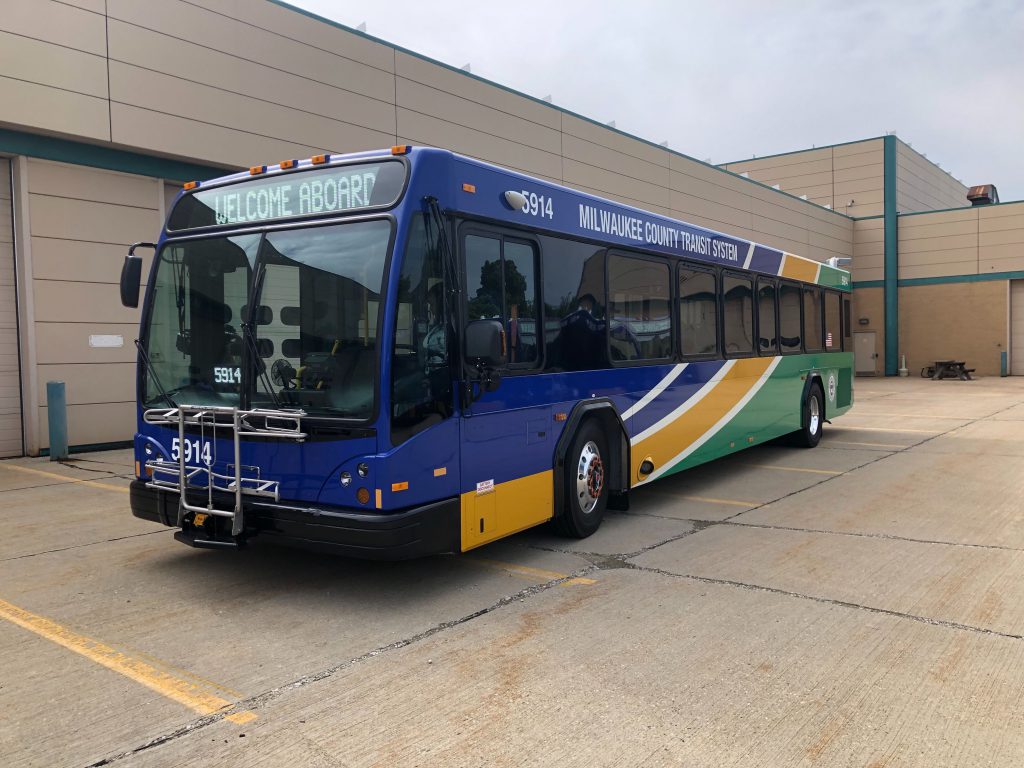MCTS’ New Rider-Friendly Fare System Launches March 1
New fare system and mobile app automatically cap your payments at cheapest daily, weekly or monthly rate.
The Milwaukee County Transit System (MCTS) will begin rolling out its new fare system on March 1. With it comes a new fare-capping system design to simplify the rider experience and ensure riders are always paying the lowest price. In the fall, riders will be able to optionally ditch fare cards in favor of just using their credit card.
The impetus for overhauling the fare system was the new East-West Bus Rapid Transit System (BRT) line, which will launch in early June. The new BRT line, now called CONNECT, will include a number of new transit technologies, including off-bus fare validators.
The new fare system called UMO, developed by Cubic Transportation Systems, also comes with a new mobile app called WisGo that rolled out in the spring of 2022. But for the past nine months, that app has been functioning without a number of features — like fare capping — that will be part of the new fare collection system once it’s up and running in March. The inability to store money on the app, which has been an infuriating bug of the new app for users, will go away in March.
“Milwaukee County deserves what transit-savvy cities around the globe offer: a flexible, easy-to-use fare collection system,” Interim Managing Director Denise Wandke said in a statement. “With WisGo’s account-based system, riders get access to the best price through fare capping, a simpler fare structure, and the convenience of multiple ways to pay.”
Fare-capping is a new practice for transit systems, and it does exactly what it sounds like. It caps fares at a certain level for all riders, regardless of how much they use the system. All regular fares are $2. And, for example, the single-day cap will be $4. So once a rider has paid $4, every ride afterward that day will be free. There are also weekly and monthly caps. Ride frequently enough where a weekly pass would have saved you money and the system will automatically apply it to your account and stop charging you.
“I’m glad to see MCTS removing cost barriers and improving the transit experience for riders,” County Executive David Crowley said in a statement. “This is a key piece of transportation equity, and a way to grow loyalty among riders at time when residents are looking for alternative transportation options.”
MCTS will keep the old fareboxes on the bus for riders that want to continue paying with cash. But cash payments will not make a rider eligible for fare capping, because there’s no way for the system to track the rides.
Tim Hosch, MCTS CFO, told Urban Milwaukee that only a few other cities in the U.S. have implemented fare capping, and that they did see a “slight decrease” in farebox revenue as a result. But, Hosch said, MCTS thinks the new system will encourage more ridership.
Riders can use the new fare system through the WisGo app or new WisGo smartcards, which will replace M-Cards. The transit system will be replacing M-Cards with new WisGo smartcards for free from the beginning of April to the end of June. There are approximately 100 stores — including El Rey, CVS, Pick N’ Save. — around the county that sell M-Cards. They will begin switching over to WisGo cards in March and another 120 stores will join them.
By Aug. 31, riders will no longer be able to load money on their M-Cards, and by Oct. 1 the fare validators will stop accepting M-Cards.
Hosch said the Umo technology “represents a huge upgrade in our fare collection system.” Whereas it used to take up to 36 hours for a payment to load onto an M-Card, money can be added to WisGo cards in real time,” Hosch said. Additionally, later in the year, the system will launch an “open payments” feature that will allow riders to pay fares with credit or debit cards directly at the onboard fare validator.
The new WisGo app will also integrate other transportation options, so that users can see nearby ride-sharing options, like Bublr Bikes and electric scooters.
“It’s a really advanced system that we’re excited to bring to Milwaukee,” Hosch said.
Update: Story has been updated to reflect that UMO was developed specifically by Cubic Transportation Systems, a subsidiary of the Cubic Corporation. A previous version of the story said it was developed by the Cubic Corporation.
If you think stories like this are important, become a member of Urban Milwaukee and help support real, independent journalism. Plus you get some cool added benefits.
Political Contributions Tracker
Displaying political contributions between people mentioned in this story. Learn more.
MKE County
-
J.D. Vance Plays Up Working Class Roots, Populist Politics in RNC Speech
 Jul 17th, 2024 by Graham Kilmer
Jul 17th, 2024 by Graham Kilmer
-
Ron Johnson Says Free-Market Principles Could Fix Education
 Jul 17th, 2024 by Graham Kilmer
Jul 17th, 2024 by Graham Kilmer
-
RNC Will Cause Some County Services To Be Moved to Wauwatosa
 Jul 12th, 2024 by Graham Kilmer
Jul 12th, 2024 by Graham Kilmer
Transportation
-
MCTS Adds 28 New Buses
 Jul 13th, 2024 by Graham Kilmer
Jul 13th, 2024 by Graham Kilmer
-
MCTS Designing New Bus Shelters
 Jul 10th, 2024 by Graham Kilmer
Jul 10th, 2024 by Graham Kilmer
-
MCTS Updates RNC Bus Detours To Better Serve Downtown, Riders
 Jul 9th, 2024 by Jeramey Jannene
Jul 9th, 2024 by Jeramey Jannene























The name “WisGo” implies coverage beyond Milwaukee. (It isn’t called “MilGo”!) Will it now (or ever) be usable in other bus systems like Waukesha, Racine, or Madison??